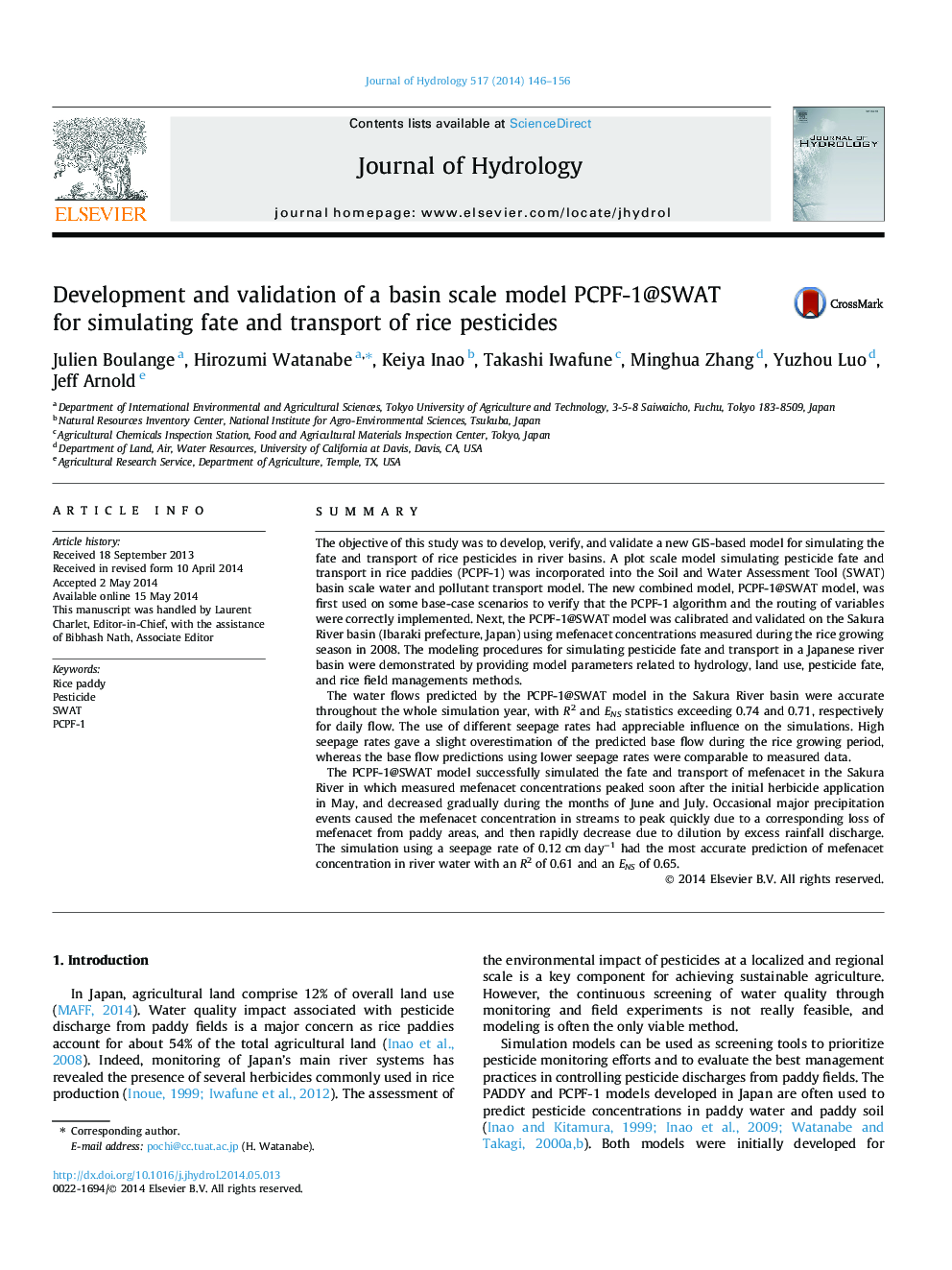| کد مقاله | کد نشریه | سال انتشار | مقاله انگلیسی | نسخه تمام متن |
|---|---|---|---|---|
| 6412907 | 1629931 | 2014 | 11 صفحه PDF | دانلود رایگان |

- The SWAT model was modified to better simulate the hydrology of rice paddy.
- The PCPF-1 model was incorporated into the SWAT to simulate pesticide fate.
- The PCPF-1@SWAT was validated for predicting mefenacet concentrations in Japan.
SummaryThe objective of this study was to develop, verify, and validate a new GIS-based model for simulating the fate and transport of rice pesticides in river basins. A plot scale model simulating pesticide fate and transport in rice paddies (PCPF-1) was incorporated into the Soil and Water Assessment Tool (SWAT) basin scale water and pollutant transport model. The new combined model, PCPF-1@SWAT model, was first used on some base-case scenarios to verify that the PCPF-1 algorithm and the routing of variables were correctly implemented. Next, the PCPF-1@SWAT model was calibrated and validated on the Sakura River basin (Ibaraki prefecture, Japan) using mefenacet concentrations measured during the rice growing season in 2008. The modeling procedures for simulating pesticide fate and transport in a Japanese river basin were demonstrated by providing model parameters related to hydrology, land use, pesticide fate, and rice field managements methods.The water flows predicted by the PCPF-1@SWAT model in the Sakura River basin were accurate throughout the whole simulation year, with R2 and ENS statistics exceeding 0.74 and 0.71, respectively for daily flow. The use of different seepage rates had appreciable influence on the simulations. High seepage rates gave a slight overestimation of the predicted base flow during the rice growing period, whereas the base flow predictions using lower seepage rates were comparable to measured data.The PCPF-1@SWAT model successfully simulated the fate and transport of mefenacet in the Sakura River in which measured mefenacet concentrations peaked soon after the initial herbicide application in May, and decreased gradually during the months of June and July. Occasional major precipitation events caused the mefenacet concentration in streams to peak quickly due to a corresponding loss of mefenacet from paddy areas, and then rapidly decrease due to dilution by excess rainfall discharge. The simulation using a seepage rate of 0.12 cm dayâ1 had the most accurate prediction of mefenacet concentration in river water with an R2 of 0.61 and an ENS of 0.65.
Journal: Journal of Hydrology - Volume 517, 19 September 2014, Pages 146-156